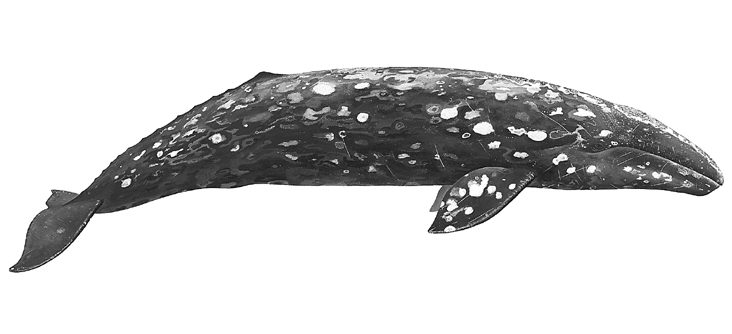Olympic National Park said a decomposing gray whale washed ashore Friday morning north of Kalaloch Campground. That makes the 24th dead whale stranding in Oregon and Washington this year during the northbound migration.
A common thread runs through the necropsies on the spate of dead gray whales washing up on West Coast beaches this spring, according to Cascadia Research Collective senior research biologist John Calambokidis.
He said the perished whales appeared skinny, malnourished or even emaciated. The big unknown is why these whales didn't fatten up enough on their feeding grounds last year to get through the migration.
Calambokidis said he is reasonably confident the starving whales can be attributed to an increasing gray whale population intersecting with a downturn in their prey.
"Does that have any relationship to oceanographic conditions, especially some of the dramatic climate change issues that are occuring in the Arctic?" the whale expert wondered during an interview in Olympia.
A NOAA spokesman said federal scientists in Alaska are going back over their research data from last year to see if they can spot anything relevant.
"Was there something that changed in terms of where the whales were feeding, or if they were constrained, or the food source was not as rich as it could have been?" NOAA Fisheries spokesman Michael Milstein asked in an interview Friday from Portland.
Gray whales are bottom feeders, preferring to filter tiny crustaceans from the seafloor.
The overall population of gray whales on the West Coast remains robust. Eastern Pacific gray whales were taken off the endangered species list in 1994. The population is now estimated at 27,000, which may be around the carrying capacity of their ocean territory.
Milstein said the running tally of dead gray whales now stands at 64 West Coast-wide. That includes three found in Alaska, 21 in Washington, three in Oregon and 37 in California."We're trying to gather as much information as we can through the necropsies and to assemble that," Milstein said.
Calambokidis said the 21 dead whales counted this year in Washington state alone is the highest on record since a previous die-off in 1999-2000."We may be on our way to exceeding those numbers from that previous event because we are still early in the year," he said. "Typically, we see peak gray whale standings in April, May, June and sometimes into July. So we're still early in this peak period and it has not shown signs of abating yet."
There were a total of 25 dead gray whale strandings West Coast-wide in all of 2018.
Skinny, dead whales are washing up both in inside waters and on exposed coastal beaches. Calambokidis said his group right now is noticing more gray whales venturing off the normal migration route to explore inside waters such as San Francisco Bay and Puget Sound, perhaps in search of food.

Reader Comments
to our Newsletter